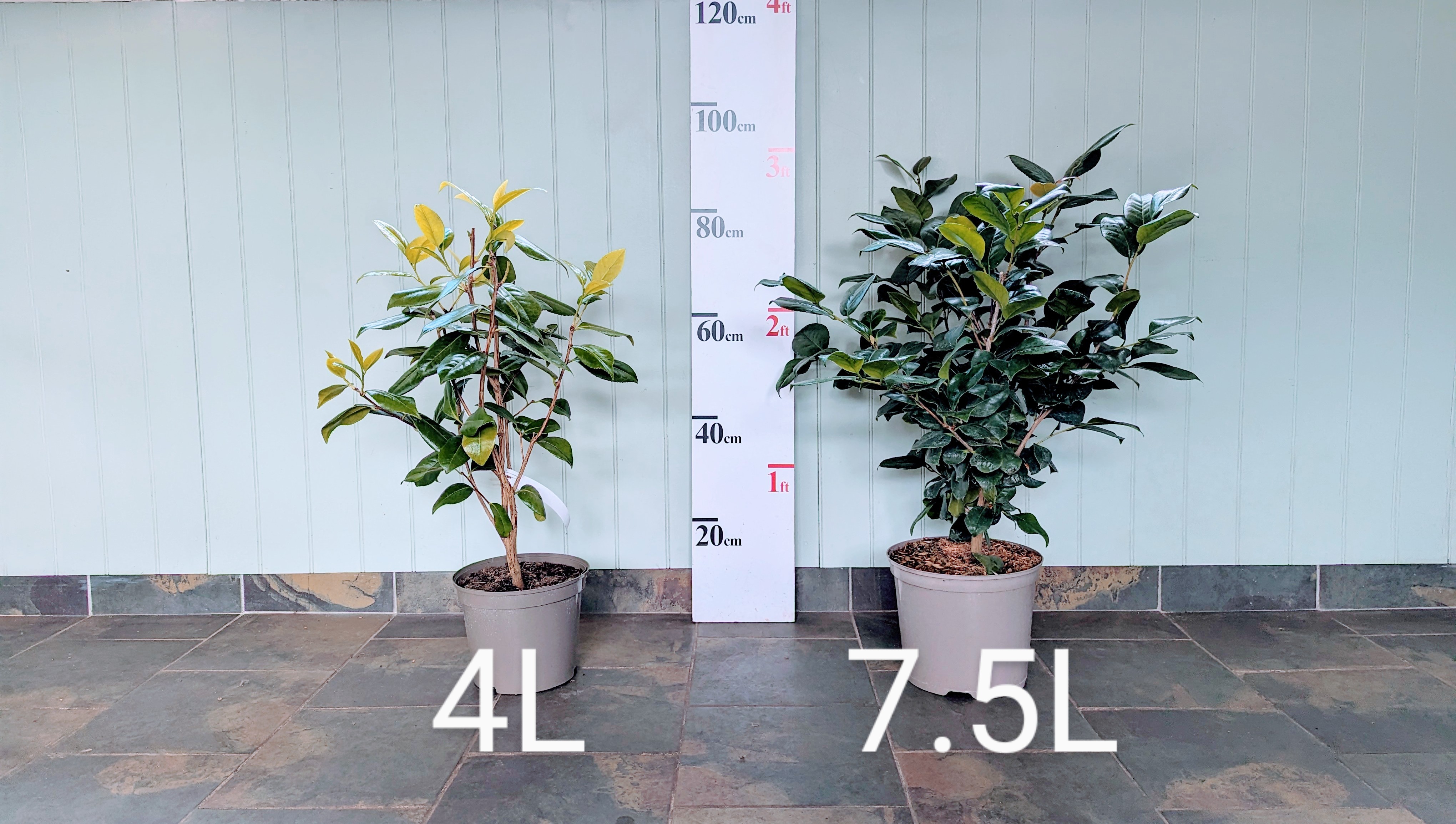Camellia sasanqua 'Paradise Audrey'
Item: CAPARA
 Currently Unavailable
Currently Unavailable
Jan-Mar
White & Cream
125-150cm
Not Scented
No
To -15 °C
Collect in Store
This item is available for collection.
Home Delivery
UK mainland delivery from £8.95
(H4) One of the Paradise range of Autumn and Winter flowering Camellias. A lovely evergreen shrub producing masses of informal double shell pink flowers over a long period from October onwards. Good dark green glossy foliage, and suitable for sun or shade, but not for the coldest of gardens. Height 150cm in 10 years.
Raised by Bob Cherry, one of the leading Camellia breeders in Australia. It has got to be good as he named after his mother!
Customer Reviews

Good to know
Camellias associate well with rhododendrons and offer beautiful formal flowers early in the year, before the main rhododendron season starts. These evergreen shrubs have dark glossy leaves and flowers in shades of white, pinks and reds. They like similar growing conditions – moist acidic soil and dappled shade. With the exception of sasanqua varities which prefer a sunny aspect.
Camellias have a stronger and deeper root system than rhododendrons, but these fleshy roots are prone to frost damage in cold winters. Camellia Japonica’s will put up with a slightly colder temperature in the winter but love a long warm summer to help set flower buds. Camellia x williamsii do better in a slightly cooler summer garden and don’t require as much direct sunlight to help with flower bud set. Camellias are much safer planted in the ground rather than being exposed in containers which can freeze solid and kill the roots. Roots can be kept warmer by applying a good mulch of leaf-mould in the autumn to act as insulation. In mild regions, camellias are suitable for growing in pots and containers; re-pot every 3 years for best performance. Extra protection can be provided in winter by plunging pots into the ground or by wrapping them up with bubble wrap.
All require good moist acidic soil with a high organic content, planted with good ericaceous compost. For a guide to plant spacing, use the height we give in 10 years as a guide to the distance between each plant. Plant no deeper than the top of the rootball, and dig in plenty of good ericaceous compost around the sides. A teaspoon of slow release feed twice a year in February and again in May, is sufficient for a 4 litre plant, rising to a small handful for a mature plant.
Please note: Deer like the soft new growth of camellias, so at least a 1 metre high ring of netting protection may be necessary if you have deer present.
For further advice, see here
Size Guide

The Basics
Ideal soil
Acidic soil, good organic content, pH 4.5-6.0. Inkarho range of rhododendrons will tolerate soils up to pH7.5
Sun or Shade
Light dappled shade is best for most varieties.
Shelter
Refer to hardiness rating. Give young plants protection.
Site Selection
Avoid close to trees, roots, invasive weeds, walls, hot patios, dry banks and waterlogged soils. Do not use weed matting or stone mulch.
Plant spacing
Use the height shown in 10 years as a guide to the distance between each plant. Allow room for plant to fill out. If planting closer for instant impact, be prepared to move plants after a few years.
Compost
- 3 litre pot, dig in 10-20 litres of ericaceous compost.
- 7.5 litre pot, dig in 20-30 litres of ericaceous compost.
- 70-80cm specimen, dig in 60 litres of ericaceous compost.
- 100-120cm specimen, dig in 120 litres of ericaceous compost.
Planting depth
Plant high in the ground, with the top of the rootball visible.
Feeding
Slow-release ericaceous feed recommended in March and straight after flowering.
Mulch
Recommended every few years.
Water
The key ingredient! Keep moist all season, especially the critical time at end of June for flower bud initiation. Tap water is better than no water. Heavy dose at least once per week in dry weather.
Drainage
Ensure good drainage in winter, especially with yellow flowering varieties. Avoid waterlogged sites.
Pruning
Rhododendrons and Camellias: Not normally required. Tidy wayward shoots after flowering.
Evergreen azaleas and Bloombux can be clipped into a low hedge.
Magnolias and Acers: Formative pruning when young to shape into a tree or bush.
Deadheading
Remove old flower-heads, particularly on young or weak plants.
For further advice see here
Delivery & Returns
Our website calculates the delivery charge according to weight and delivery location throughout the UK. To see these charges, please enter your postcode at the checkout, and you will see the charge vary as you add more items to your wheelbarrow.
 Millais Nurseries
Millais Nurseries





